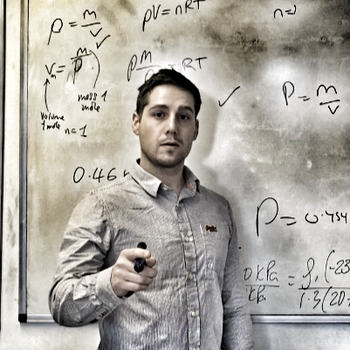How can I calculate the ideal gas law equations?
1 Answer
There are two versions of the ideal gas equation:
Molar version:
Molecular version:
Where the pressure - P, is in atmospheres (atm)* the volume - V, is in liters (L) the moles -n, are in moles (mol) and Temperature -T is in Kelvin (K) as in all gas law calculations.
*NB SI units for pressure is Pa and for volume is
The value and unit of molar gas constant,
When we do the algebraic reconfiguration we end up with Pressure and Volume being decided by moles and Temperature, giving us a combined unit of
The constant value then becomes 0.0821
If you choose not to have your students work in standard pressure unit factor, you may also use: 8.31
Temperature must always be in Kelvin (K) to avoid using 0 ºC and getting no solution when students divide.
There is a variation of the ideal gas law that uses the density of the gas with the equation
Where M is the Molar Mass in g/mol and d is the Density of the gas in g/L.
Pressure and Temperature must remain in the units atm and K and the Gas Law Constant remains
In SI
Let's take an example of a 2.0 moles of nitrogen at 20 ºC and 3.00 atm and find the volume.
P = 3.00 atm
V = ?
n = 2.0 mol
R = 0.0821
T = 20 + 273 = 293 K
I hope this is helpful.
SMARTERTEACHER


